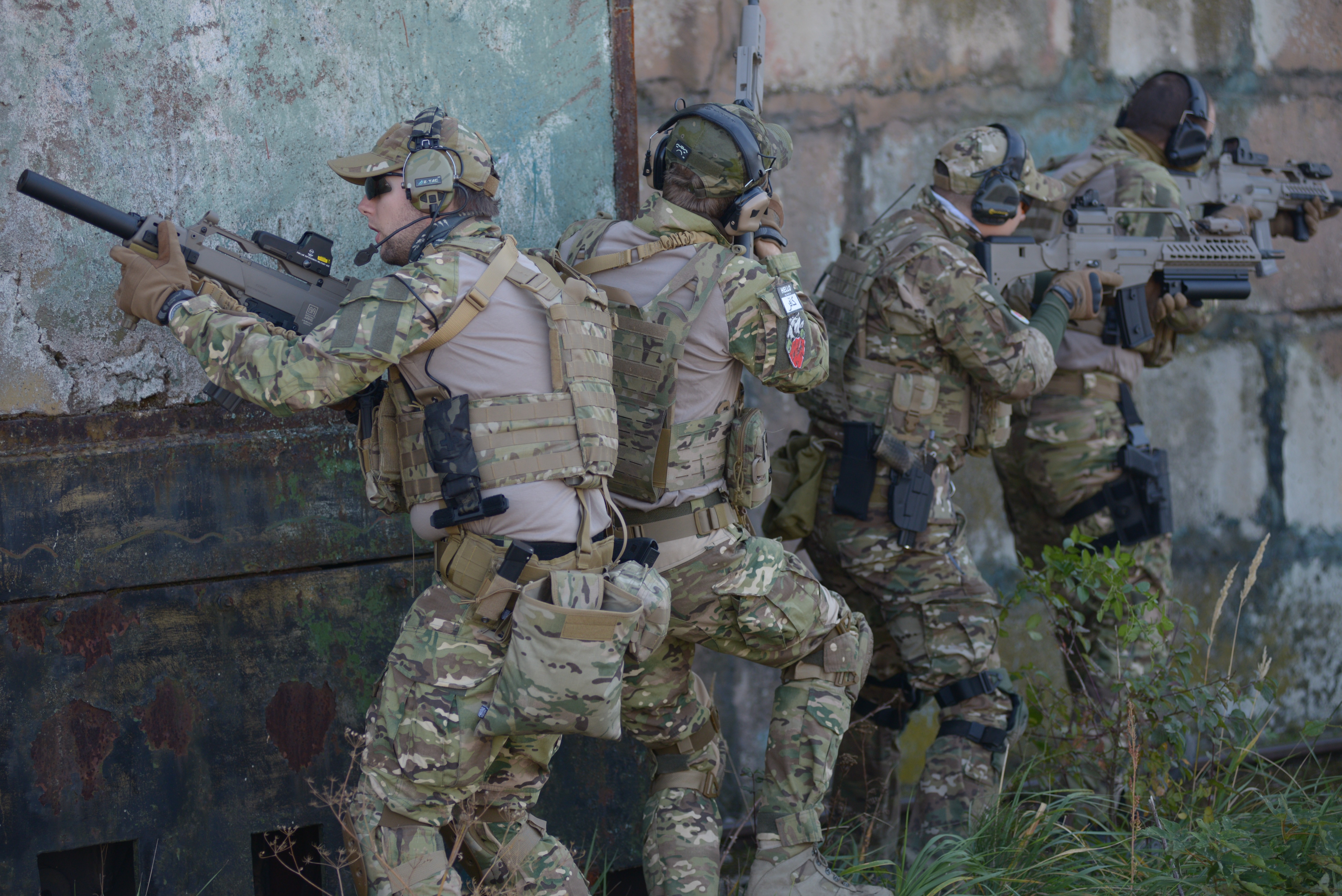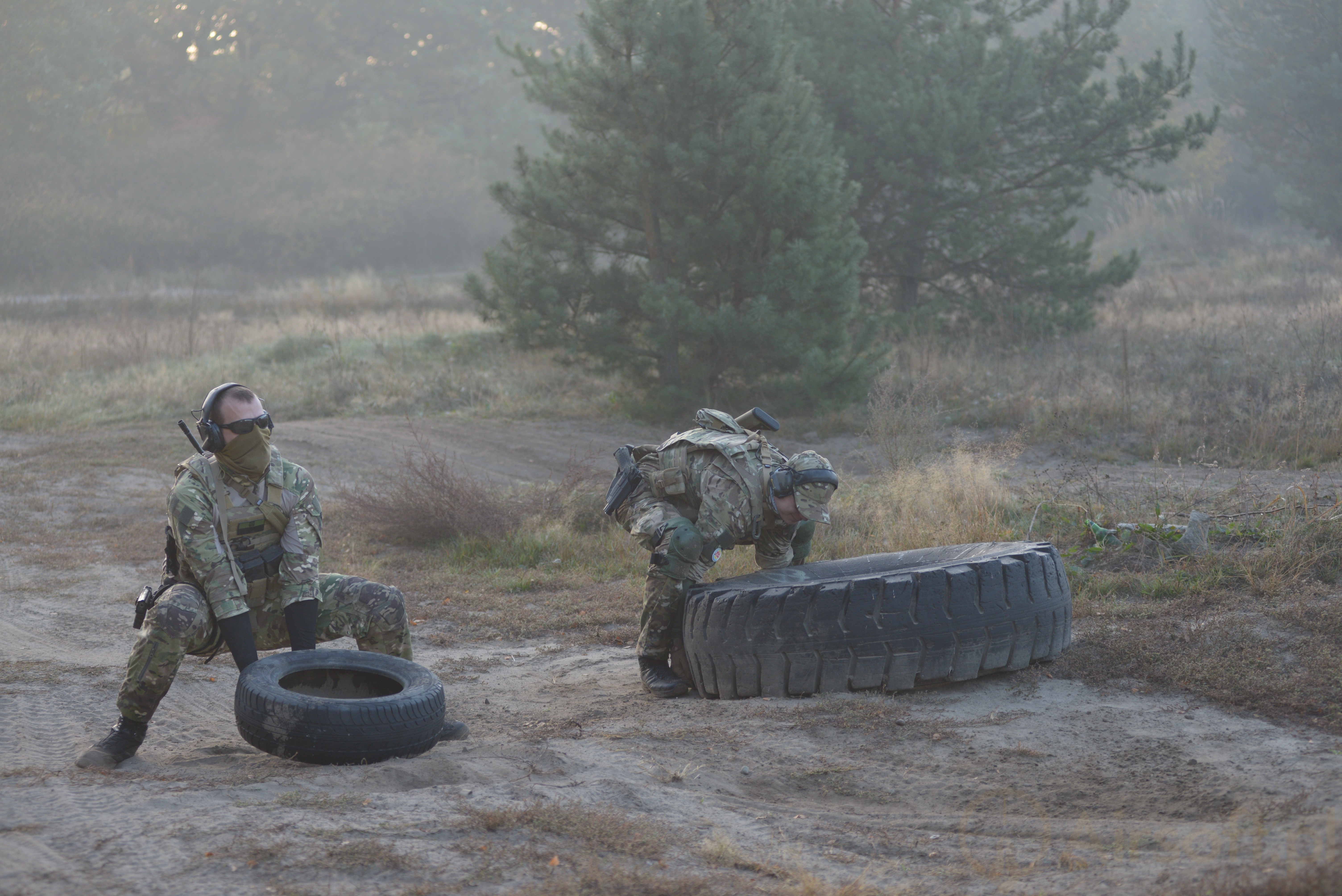Airsoft training – what can you train with your team?
Airsoft training - learn to walk, then run
Appropriate lines and formations play a key role in team training in airsoft, which enables efficient communication, coordinated actions, and effective response to changing conditions. As shown in previous articles on our blog, formations such as columns are essential for the effective movement of units on the battlefield. Now we will focus on how team training can further develop these skills, resulting in even better performance in the game.

Basic procedure of airsoft training
In airsoft team training, additional procedures include breaking contact and attacking. Even though both opportunities may be relevant to each other, they have completely different goals and strategies. Breaking contact involves strategically withdrawing from the battlefield in a situation of threat or advantage to avoid confrontation and preserve one's combat capabilities. Instead of an attack, the aim is to actively move toward the enemy, using tactics and surprise, to incapacitate the enemy in the field. Both of these activities are crucial for effective work in various situations on the battlefield.
We will discuss the procedure based on the conclusions of 12 people. The entire supply will consist of two subsections of 6 people, one of which will be a "copy" of the other (there will be two medics, two navigators, two subsection commanders, etc.).

Breaking off contact
Breaking contact plays an important role in situations when the team is under enemy pressure or is forced to strategically withdraw. Thanks to contact-breaking procedures, players learn how to remain calm and in control of the situation, how to quickly regroup and adapt to new conditions, and how to effectively use the terrain to disorient the enemy and escape.
Breaking up by subsections
After establishing contact, the section commander gives a signal to break contact. Our team has "Tear in sections". Every signal this message sends is clear and distinct so that the last person in the extended column is received and sent. After turning off the control to one of the subsections - depending on what the designations will be "left - right", "alpha - beta", "one - two".
The left section is going back, and the right section leads at the time, which is supposed to cover the running group. After running 10-15-20 meters, depending on the terrain (or about 5 seconds, in any terrain), all runners "lie down" - they position themselves with the barrel in direct contact with the fire. Each subsection reports its readiness, usually with numbers (1-6, the first one to reach ten has the number 1, the third one has the number 3, and the next one appears in the prediction). Number six reports readiness to have a section with a report - six ready, section ready. The second commander, who is connected to the signal that the predecessors are being led to fire can give his order to break off. The slogan "right back" / "right out" is heard, then the second section goes back. The right section reaches the left section, which leads to the attack. They lie flush with them, forming an array from which the procedure began. The procedure repeats until contact is away, ammunition runs out, or backup arrives. 3-4 jumps are enough.
The idea behind this is that it has special safety characteristics and at the same time slows down the opposing action - under constant fire without any action.

A breaking contact via road
In the case of breaking in the opposite direction to the walking direction, the procedure can be slightly changed. When we go along a wider path with a checkerboard, or a chocolate (whatever you call it) and make contact at the front, we want to break towards the end of the formation. Therefore, the first people immediately fire forward - in the direction where the opponents are definitely there. The second pair is positioned in the same direction but is not firing because they have their own in front of them. The remaining people are arranged sideways - according to their sectors. The last pair has the barrels facing backward.
The command is "break back", "run the road", and "break doubles" or whatever. The first two stand up and… there are three options here.
- They run straight back in the middle of the road - the fastest, but open to bullets that may even hit them by accident.
- They run sideways - slower, but safer because they are out of the road, but they have to watch out for grass and bushes.
- They run in the middle in a zigzag. They are supposedly able to dodge bullets, but they run slower. In my experience, this is the worst option.
Regardless of the method chosen, the 1s and 2s from the first section get to the back of the board. It lies at the "standard" distance (the same as the rest of the units in the formation). It lies in the direction of the run, i.e. at the back of the formation. The last two who held this direction start looking to the side, holding their sectors. At this time, the second two from the beginning of the formation are already firing - right after the first people break up. The third two (currently second in formation) turn from side to front, preparing to fire. The rest of the formation holds its sectors. The first two count down 5 seconds after the first two go back and run to the back. And so on.
This is one of the fastest methods of grappling, the disadvantage is that there are only two barrels towards the opponent. The advantage is great protection against flanking. It is also important to maintain the idea of keeping the exposure of people running as short as possible. They change magazines, and check and correct their airsoft guns and equipment only after reaching the end of the formation, not while running.
Attack
The attack is basically the same, only in the other direction - in sections forward, in twos forward. Most often, it reaches the line formation so that as many barrels as possible can be occupied by the enemy's unit, but who can stop you? ;) However, I will write about this in detail in another text, so as not to turn it into an encyclopedia of airsoft tactics.

Does airsoft training affect team performance?
In summary, the effective use of break-contact and advanced procedures is crucial to a team's success in airsoft. Both the ability to quickly and efficiently withdraw from the battlefield and the ability to purposefully and organizedly move toward the enemy are extremely important in dynamic situations on the battlefield. Therefore, practicing these procedures regularly as part of team training is essential to ensure the smooth operation of the team in any situation. The better a team masters these procedures, the more control and confidence they will have on the battlefield, which will lead to better results and a greater chance of winning each game.
Author: Krzysztof Ostryżniuk
Check out similar entries:






